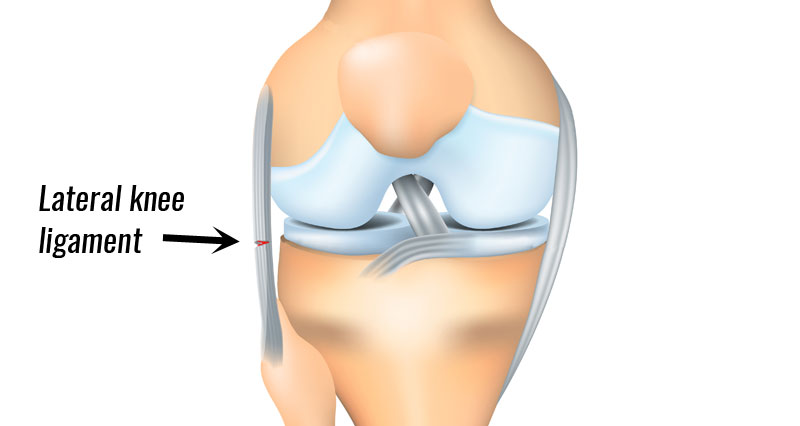Torn LCL - Causes, Symptoms, Treatment, Prevention
March 11, 2019WHAT IS A LCL (LATERAL COLLATERAL LIGAMENT) TEAR?
The LCL, also known as the lateral collateral ligament, is one of four supporting ligaments that provide stability for the knee joint when engaged in any kind of movement. The LCL runs along the outside of the knee to connect the upper thigh bone (femur) to the narrower lower leg bone (fibula). Graded mild to severe, an LCL injury can be a stretch, a partial tear, or complete tear of the lateral collateral ligament.
WHAT CAUSES AN LCL TEAR OR SPRAIN?
The LCL in injured by a direct blow to the inside aspect of the knee which stretches or tears the LCL ligament. A very hard hit or blow to the inside of the knee can impact the ligament along the outside aspect of the knee and cause it to stretch it tear. This type of injury often seen with dislocations and can happen in a variety of contact sports. This can cause the LCL, which is located on the outside of the knee, to be stretch or torn beyond its normal range of motion. Tears to the LCL are often seen during knee dislocations. Luckily LCL injuries are far less common than tears to other ligaments in the knee.
WHAT ARE THE SYMPTOMS?
- There will often be pain on the outer side of your knee.
- There will be swelling and tenderness.
- You may have the feeling of your knee giving way.
- You might hear or feel a pop or snap at the time of injury.
It is important to consult an expert physician to diagnose and confirm an LCL injury. Your doctor will be able to perform an evaluation that will consist of asking questions about how the injury occurred, as well as, check your range of motion to help diagnose your injury. An MRI test may also be ordered to confirm the injury. If your knee is swollen the doctor will often recommend using an elastic bandage, as well as, crutches to help slowly begin walking with less stiffness. WHAT IS THE
TREATMENT FOR AN LCL INJURY?
Immediately after an LCL injury, the proper treatment consists of RICE (Rest, Ice, Compression, Elevation) to help reduce the amount of swelling and inflammation present inside the knee joint. This treatment should be initiated within the first 24 hours after the injury and should be continued until an appointment with a doctor can be made. The previous activity should be halted until the checkup with the physician.
Using over the counter anti-inflammatory medications such as ibuprofen may be helpful with reducing inflammation.
Most of the time surgery is not needed to repair the torn LCL unless other knee ligaments have also been injured. The LCL does not attach to the lateral meniscus so injuries to the meniscus are not typically present in conjunction with LCL sprains. While recovering from this injury a rigid hinged knee brace can be worn to provide support and protection for healing ligaments.
The extra stability will provide added safety with walking activities. Your doctor may also recommend starting a physical therapy rehabilitation program to slowly regain both full range of motion and muscular strength.
WHEN CAN I RETURN TO FULL ACTIVITY OR SPORTS?
The goal of rehabilitation is to return you to your sport or activity as soon as is safely possible. If you return too soon you may worsen your injury, which could lead to permanent damage. Everyone recovers from injury at a different rate so returning to your sport or activity will be determined by how soon your knee recovers, not by how many days or weeks it has been since your injury occurred. You may safely return to your sport or activity when, starting from the top of the list and progressing to the end, each of the following is true:
- Your injured knee can be fully straightened and bent without pain.
- Your knee and leg have regained normal strength compared to the uninjured knee and leg.
- Your knee is not swollen.
- You are able to jog straight ahead without limping.
- You are able to sprint straight ahead without limping.
- You are able to do 45-degree cuts.
- You are able to do 90-degree cuts.
- You are able to do 20-yard figure-of-eight runs.
- You are able to do 10-yard figure-of-eight runs.
- You are able to jump on both legs without pain and jump on the injured leg without pain.
Because your knee will be weaker than it normally was before your injury, be sure to wear a knee brace to support your LCL to prevent further injury. It’s also a good idea to ice your knee after activity or sports to help speed your recovery.
